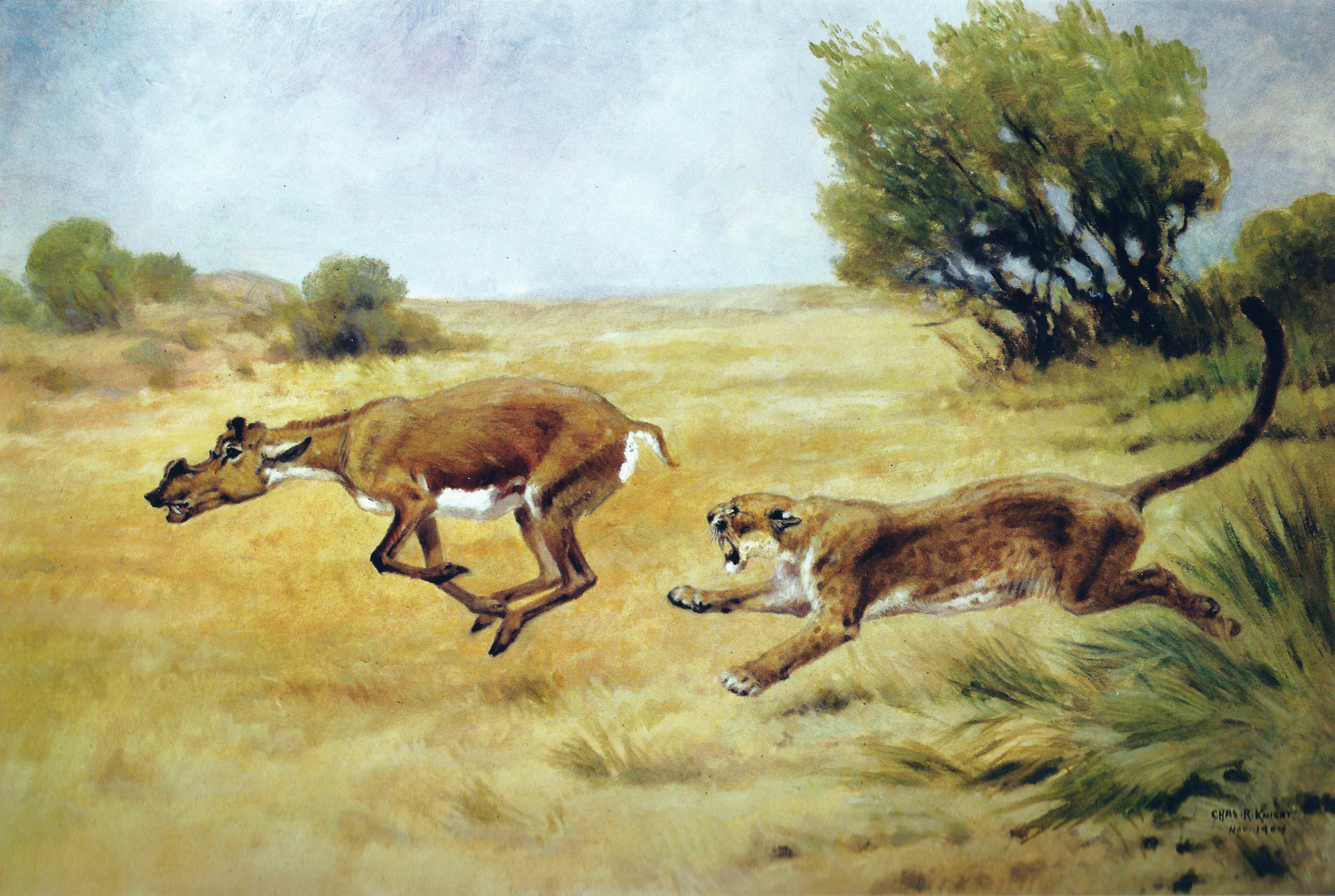Protoceras on:
[Wikipedia]
[Google]
[Amazon]
''Protoceras'' ('first horn') is an extinct ''Protoceras'' at fossilworks
/ref>
genus
Genus (; : genera ) is a taxonomic rank above species and below family (taxonomy), family as used in the biological classification of extant taxon, living and fossil organisms as well as Virus classification#ICTV classification, viruses. In bino ...
of Artiodactyla
Artiodactyls are placental mammals belonging to the order (biology), order Artiodactyla ( , ). Typically, they are ungulates which bear weight equally on two (an even number) of their five toes (the third and fourth, often in the form of a hoof ...
, of the family Protoceratidae, endemic to North America
North America is a continent in the Northern Hemisphere, Northern and Western Hemisphere, Western hemispheres. North America is bordered to the north by the Arctic Ocean, to the east by the Atlantic Ocean, to the southeast by South Ameri ...
. It lived from the Oligocene
The Oligocene ( ) is a geologic epoch (geology), epoch of the Paleogene Geologic time scale, Period that extends from about 33.9 million to 23 million years before the present ( to ). As with other older geologic periods, the rock beds that defin ...
to the Early Miocene
The Miocene ( ) is the first epoch (geology), geological epoch of the Neogene Period and extends from about (Ma). The Miocene was named by Scottish geologist Charles Lyell; the name comes from the Greek words (', "less") and (', "new") and mea ...
33.3—16.0 Ma, existing for approximately ./ref>

Morphology
''Protoceras'' was long and resembled adeer
A deer (: deer) or true deer is a hoofed ruminant ungulate of the family Cervidae (informally the deer family). Cervidae is divided into subfamilies Cervinae (which includes, among others, muntjac, elk (wapiti), red deer, and fallow deer) ...
in terms of body shape. Like some other protoceratids it had three pairs of blunt horns on its skull. In life these were probably covered with skin, much like the ossicone
Ossicones are columnar or conical skin-covered bone structures on the heads of giraffes, male okapi, and some of their extinct relatives. Ossicones are distinguished from the superficially similar structures of Horn (anatomy), horns and antlers ...
s of a giraffe
The giraffe is a large Fauna of Africa, African even-toed ungulate, hoofed mammal belonging to the genus ''Giraffa.'' It is the Largest mammals#Even-toed Ungulates (Artiodactyla), tallest living terrestrial animal and the largest ruminant on ...
. ''Protoceras'' was sexually dimorphic
Sexual dimorphism is the condition where sexes of the same species exhibit different Morphology (biology), morphological characteristics, including characteristics not directly involved in reproduction. The condition occurs in most dioecy, di ...
: females only had one pair of horns, on the back of the skull, which was shorter than the same pair in males. Males probably used these horns for display, impressing females, or intimidating rivals. Due to the orientation of the horns the males probably displayed them sideways instead of frontally.
''Protoceras'' was one of the earliest and most primitive protoceratids, still possessing upper incisor
Incisors (from Latin ''incidere'', "to cut") are the front teeth present in most mammals. They are located in the premaxilla above and on the mandible below. Humans have a total of eight (two on each side, top and bottom). Opossums have 18, wher ...
s and four functional toes (later genera had only two functional, hooved toes). It lived in the deserts of the Late Oligocene, alongside the oreodont '' Leptauchenia''.
References
{{Taxonbar, from=Q1819072 Protoceratids Oligocene Artiodactyla Miocene Artiodactyla Cenozoic mammals of North America Aquitanian genus extinctions White River Fauna Rupelian genus first appearances Taxa named by Othniel Charles Marsh Fossil taxa described in 1891 Prehistoric Artiodactyla genera